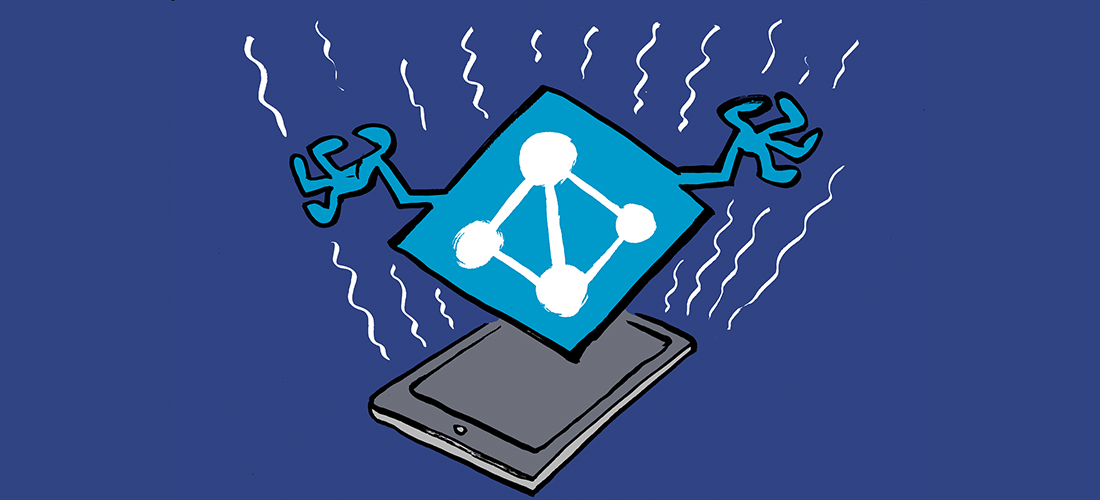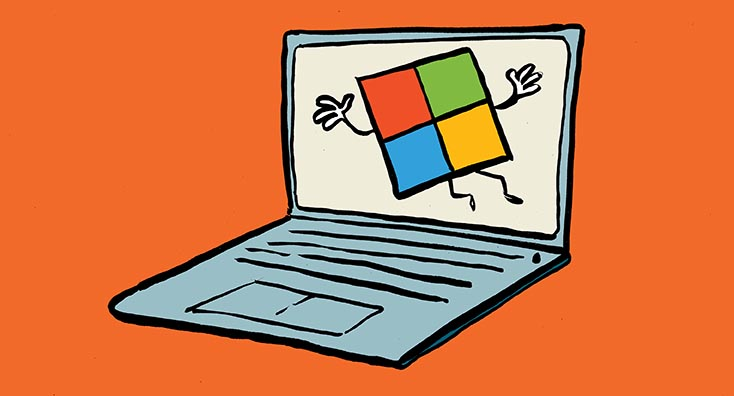Organizations Need to Prepare Now to Move to Exchange Server SE in 2025
This fine site holds many articles about Exchange Server. Our thoughts therefore focused on the recent communication from the Exchange development team laying out their plans and recommendations for the transition to Exchange Server subscription edition (SE). There are many mentions of Exchange 2019 in the text, but the essence of the message is that those running on-premises Exchange servers need to figure out their plan to upgrade their organization to run Exchange Server subscription edition after its release in summer 2025.
Licensing for Exchange Server SE follows along the same lines as Exchange 2019. Users must have an Exchange Online license or a Client Access License (CAL) purchases through Software Assurance. Free licenses will be available for Exchange Server SE hybrid servers. It will also continue to be possible to manage Exchange recipient properties on-premises with PowerShell or using the Exchange Management tools without the need for a server.
The Next Three Exchange Server Releases
Microsoft’s next three releases of Exchange Server are Exchange 2019 CU15, Exchange Server SE, and Exchange Server SE CU1. The first release of Exchange Server SE is essentially a rebrand of Exchange 2019 CU15 with a few tweaks such as the removal of the Outlook Anywhere protocol. Its sole purpose is to establish the beachhead for the subscription edition.
These releases will appear starting in the second half of 2024 with Exchange 2019 CU15. No further updates will appear for Exchange 2016 and Exchange 2019. Critically, none of these releases support coexistence with Exchange 2013, and when Exchange Server SE CU1 appears in late 2025, coexistence with all previous on-premises versions of Exchange Server disappears.
In other words, organizations who intend to remain with an on-premises email service should be on Exchange 2016 CU23 now to be ready to move to Exchange 2019 CU15 when it appears. It’s a pain to upgrade Exchange organizations but you should be running a supported version of Exchange 2016 and need to get to Exchange 2019 to make the jump to Exchange Server SE. The need to upgrade is valid for hybrid organizations and edge servers too.
Interestingly, Exchange Server SE does not periodically check with the mother ship that it is correctly licensed. The installation procedure performs a license check and if that passes, you’re good to go until the time comes to update the server. To stay in compliance with licensing requirements, users need Exchange Online licenses or CALs.
Organizations will need to apply server updates on a more consistent basis than has been allowed heretofore. The whole point about a subscription edition is that you subscribe to keep the server updated with new functionality, bug fixes, and security patches. Acknowledging that Exchange server upgrades can be painful, Microsoft will introduce a new server upgrade process that’s similar to installing a cumulative update. In other words, server upgrades should be faster and easier to perform, so there’s no excuse for not upgrading.
Transport Blocking Will Affect Exchange 2016 and Exchange 2019
Microsoft will encourage the transition by using the transport enforcement system to block email traffic from Exchange 2016 and Exchange 2019 servers to Exchange Online after those servers become unsupported and Exchange Server SE is available.
As I understand it, the view from Redmond is that the tactic of blocking old Exchange servers from being able to send email to Exchange Online is very successful and has changed the way customers think about server upgrades. You might or might not agree, but blocking email from obsolete servers is certainly an effective way to remind a company that running old email software is not good in a world where cyber criminals delight in compromising unpatched servers.
A New World
It’s clear that the old way of running a mixture of servers installed with different versions of Exchange Server will soon disappear. Network-based threats mandate that software must be kept updated. Exchange Server is no different from any other critical piece of your IT infrastructure. It just happens to have a poor reputation gained in episodes like the HAFINUM attack because of a lack of discipline and rigor around server upgrades.
Far fewer organizations run on-premises Exchange today and most of those who struggled to cope with the need to manage Exchange Server have likely moved to the cloud. In other words, the organizations that run Exchange Server today are experienced and know their stuff. Even so, the transition to a subscription edition is unlikely to be seamless and will experience some glitches. Starting to prepare early and keeping abreast of news from the engineering group and community are good ways to lessen the chance of problems. Good luck!




Thanks for the info, we are looking at using EMT and shutting down Exch19 server. Based off the article from MS, as we meet the criteria. (Our mailboxes are in 365, but we still need to sync with AD).
What’s a bit unclear, can we just run that tool for the next few years? Or is the tool essentially linked to exh2019, i.e will the tool itself become unsupported come exch19 EOL?
I assume that EMT will continue because the first version of Exchange SE is essentially a reskinned version of the current Exchange Server.
Hi
today i am using on prem exchange 2016 CU23
and i read here : https://techcommunity.microsoft.com/blog/exchange/exchange-server-roadmap-update/4132742
i can have Exchange 2016 and SE in coexitence is it correct and do the migration from 2016 to SE?
THe advice given in the Microsoft article for sites running Exchange 2016 CU23 is “Legacy upgrade to Exchange 2019 CU15 now.” I think that’s pretty clear. Get your servers to Exchange 2019…
Hello
I am planning to upgrade my 4 Exchange Servers from 2019 to Subscription Edition. However, I was previously able to use 2019 without a CAL license. Will my mailboxes not work after the upgrade?
Org that i support runs Exchange 2016 hybrid.
We have mail relaying off our exchange.
Is this correct: In our case we would upgrade to 2019 latest CU and be ready to accept SE.
Or
When SE is released, upgrade and move 2016 to SE and rerun hybrid?
Will SE support 3rd party mail hygiene for mail filtering?
Can we still continue to have mail relay?
Late to the party, i suppose…
You can run whatever version of Exchange on-premises you want, but if you want to be supported, you’ll need to get to SE. That means going to Exchange 2019 CU15 to prepare to go to SE.
We currently use Exchange 2016 Hybrid to maintain directory sync. From what I am reading and understanding of Exchange SE, the Hybrid license will still be available for “free” but if I want updates going forward I will have to buy SA for it?? Which means it’s no different than remaining on 2016/2019 any way?
No, my reading is that the free hybrid license will remain in place for as long as people need it. We will know more when Microsoft formally launches Exchange SE in mid-2025.
According to the team blog, the hybrid license is ‘free’ but you must buy software assurance or have an appropriate level of a cloud license in order to install Exchange updates to the ‘free’ hybrid onsite server.
https://techcommunity.microsoft.com/blog/exchange/upgrading-your-organization-from-current-versions-to-exchange-server-se/4241305
Yes. That’s what I expect. You need to keep your Exchange environment in a licensed state.
For the licensing requirement, I am already using the Exchange 2019 CU14 (several servers with the same Enterprise key ) and client access licenses are used normally for now, when upgrade to Exchange SE, do I need to purchase additional licenses? Are existing server key and CALs enough to use in the Exchange SE? Or Either I need to assign Online E3/E5 license for each user or need to purchase the SA?
For the server update in the future, if Exchange SE licenses do not need Online validation, do the security updates need to be installed manually like in exchange 2019/2016?
I believe that the licenses you have will suffice for SE. CALs are for on-premises client usage. Exchange Online licenses cover both cloud and on-premises (because they cover hybrid too).
The situation around installing updates is that you’ll need to install updates as Microsoft releases them to stay supported.
Good article. Is there an estimate on what Exchange SE itself will cost? We’re coming up to budget time for some of our clients and they need to know.
Microsoft typically doesn’t release firm pricing information until closer to a server launch. Given that SE is expected in summer 2025, it might be affected by price changes for Microsoft’s FY26. We shall see in time.
Good article. I understand the cost per license or CAL, but is there an estimate on what Exchange SE itself will cost? We’re coming up to budget time for some of our clients and they need to know.
Safe? …So, when Azure gets hacked (again) will Microsoft be liable, or even apologize, to us?
I know it’s not a “fast one”, however, I’ve been informing colleagues of this impending treachery for years, now… ever since they declared EOL for Exchange 2019 as the end of 2025 – the same as Exchange 2016.
What about clients with sensitive and/or confidential data? Do you expect Microsoft to keep their noses clean?
Regardless, I’ve been pushing clients to OpenExchange ever since I found out about their 2025 EOL plans.
¡Provecho!
You’re entitled to your opinion. I’m not quite sure what your point is about Azure being hacked and anyone’s need to apologize. Treachery sounds like an emotive term that is inappropriate for this discussion. Maybe you can define where the alleged treachery lies and what evidence exists to back the allegation. As far as I can see, Microsoft has been reasonably upfront with its plans and has laid out the decision point for customers: stay on-premises and use Exchange SE (and stay up to date to make sure that their software is secure and supported) or go to the cloud. Software reaches EOL. The only question is at what point.
Will transport enforcement system block Exchange 2019 emails even if they transit via a smart host gateway (Proofpoint, Barracuda, Trendmicro, …)?
Have you asked the vendors of the various mail hygiene services? They’re the folks who work with Microsoft to minimize the impact on customers…
is O365 Licenses will be supported with SE version?
Anything with an Exchange Online service plan should be fine. For instance, Office 365 E3 and E5 both contain Exchange Online Plan 2.
No disrespect intended, but then why isn’t Windows subscription based? That same logic should apply to EVERY software Microsoft makes, but it doesn’t…hence why i smell a rat
Maybe you could regard Windows 365 as a form of subscription-based Windows?
But you can’t compare the Windows market to Exchange in terms of types of usage or numbers. Microsoft has already moved SharePoint on-premises to subscription. This is just the next domino to fall.
Well, i buy a exchange server CU15 in some months. And later, in less than 1 year, there are mails that doesnt arrive to an internet recipient that is in Azure. Its impossible Microsoft do it. Countrys lawers can make buyers return the product to Microsoft because its defective. A mail server product that cannot send mails. Its a defective product. In Spain, if i buy a product today, it must runs 2 years without problems. Software included. If Microsoft doesnt want Microsoft Exchange Server 2019 CU15 continue in use, they cannot to sell it.
Its possible to do Microsoft hybrid settings not possible. If an organization want to use Microsoft Exchange Server SE, all exchange servers must be exchange Server SE. No anyone can use Microsoft Exchange Server SE with an edge Microsoft Exchange Server 2019 CU15. It is possible to do for Microsoft.
Exactly equal than other software manufacturer that makes a version program incompatible with earlier versions.
I’m pretty sure that the Microsoft lawyers have made their terms of service water tight in respect of requiring customers to upgrade servers to the latest version as a condition for support. But feel free to take a case against Microsoft in Spain or somewhere else. I have experience of working with Microsoft (not for Microsoft) in major legal cases and I think you’ll find the experience very revealing.
Yearly cost?
Same as Exchange Server CALs today, if that’s what you buy, or Exchange Online licenses, if that’s what you prefer. The thing is that you must stay compliant with licensing requirements to receive updates.
Great info will send emails to my Small Business Clients who just do not want to go to cloud.
If Exchange Subscription is Microsoft road map then there should be an option for like Mailbox only for £1 per mailbox per user. My many small business clients (small as 1 or 2 users) only need emails and do not need OFFICE.com or OWA etc.
First Microsoft killed Small Business Server which which was cost effective for small business that have less than 10 users. Now they are killing on-prem. Not everyone want to place their mailboxes in the cloud.
There should be a simple Exchange without OWA, only on-prem mailbox and connection to Outlook and smartphones for small businesses. Not everyone can afford £5 + vat per user.
There are many other options if you don’t want to put your mailboxes in the cloud. You don’t need to use Exchange Server. But if you do, you will use SE enentually and pay for security updates etc. Quite how you secure the alteratives is entirely up to you.
I hope the lawfirm i do i.t. for sues microsoft for this. They should have to support 2019 for the same length of time as past exchange servers. Sub scription business models are pure garbage and ms needs knocked down a notch
I doubt anyone will attempt an action here. Microsoft has been very clear when the support window for Exchange 2019 terminates, so no one can argue that they are trying to pull a fast one. In addition, they can argue that moving to a model that requires customers to maintain software to ensure that the software is safe. It would be difficult for a lawyer to convince a judge that allowing customers to run insecure software when an alternative exists is a good thing.